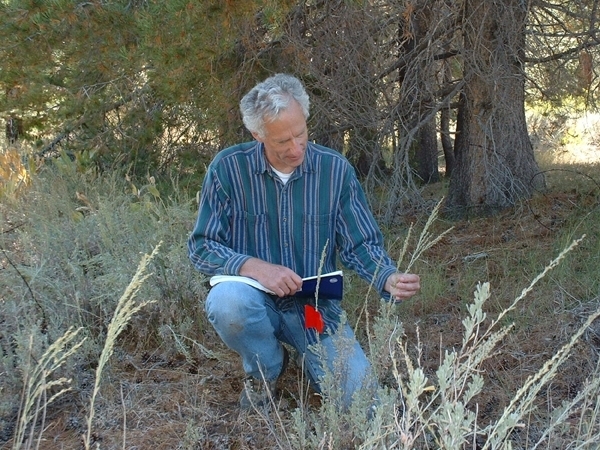
That's the gist of what ecologist Richard Karban, professor of entomology in the UC Davis Department of Entomology and Nematology, told us back in July 22, 2015 on the publication of his landmark book, Plant Sensing and Communication (University of Chicago Press).
Our news article, on the department website, covered his research and his 240-page book.
Karban's book is “the first comprehensive overview of what is known about how plants perceive their environments, communicate those perceptions, and learn," said Graeme Ruxton of the University of St. Andrews, UK, co-author of Experimental Design for the Life Sciences and Plant-Animal Communication. "Facing many of the same challenges as animals, plants have developed many similar capabilities: they sense light, chemicals, mechanical stimulation, temperature, electricity, and sound. Moreover, prior experiences have lasting impacts on sensitivity and response to cues; plants, in essence, have memory."
Karban has researched plant communication in sagebrush (Artemisia tridentata) on the east side of the Sierra since 1995. His groundbreaking research on plant communication among kin, published in February 2013 in the Proceedings of the Royal Society B: Biological Sciences, drew international attention. In that study, Karban and his co-researchers found that kin have distinct advantages when it comes to plant communication, just as “the ability of many animals to recognize kin has allowed them to evolve diverse cooperative behaviors.”
A lot has happened since then. Karban continues his 40-year research, and it's continuing to draw widespread interest.
This week writer Zoe Schlanger featured him in a Bloomberg Quint article titled The Botanist Daring to Ask: Do Plants Have Personalities?
Schlanger followed him to his field study area in Mammoth Lakes, Calif. It's part of a 156-acre reserve owned by UC Santa Barbara. She described him as "a lithe beanpole of a man with arrow-straight posture and a tuft of white hair."
"In the past 15 years or so, thanks to advances in plant genetics and a new openness toward plant research once considered fringe, botanists such as Karban have found that plants produce and respond to complex chemical signals," Schlanger wrote. "They can detect the slightest touch. They know when they're shaded by a cloud or a fellow plant, and whether that plant is related to them. Several species can recognize can recognize their genetic kin and rearrange their bodies to avoid competing with siblings. They can manipulate predators to do their bidding and transmit electrical signals among their roots."
Read more of Schlanger's article at https://www.bloombergquint.com/onweb/do-plants-have-personalities-this-botanist-is-looking-to-prove-they-do.
Karban, a fellow of the Ecological Society of America, is the go-to person regarding plant sensing and communication.
We remember asking Karban: "What are 10 things to know about plant sensing and communication?" He answered:
- Plants sense their environments and respond.
- Although they lack central nervous systems, they process information and appear to "behave intelligently."
- They sense the position of competitors and "forage" for light.
- They sense the availability of water and nutrients in the soil and "forage" for these resources.
- Their decisions are influenced by past experiences, akin to memory.
- The respond to reliable cues that predict future events, allowing them to "anticipate."
- Plants respond differently to cues that they themselves produce, allowing them to distinguish self from non-self.
- They respond differently to close relatives and strangers.
- Plants that are prevented from sensing or responding experience reduced fitness.
- By understanding the "language" of plant responses, we can grow healthier and more productive plants.
So the next time you see monarch caterpillars chowing down on narrow-leafed milkweed (Asclepias fascicularis), or Gulf Fritillary caterpillars skeletonizing their host plant, the passionflower vine (Passiflora), think about that. And ponder: Do plants have personalities?
Attached Images:
